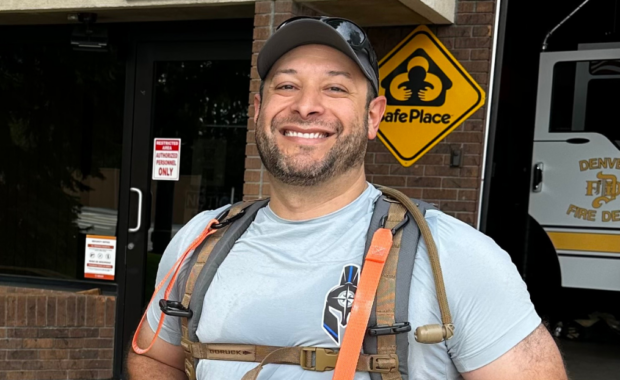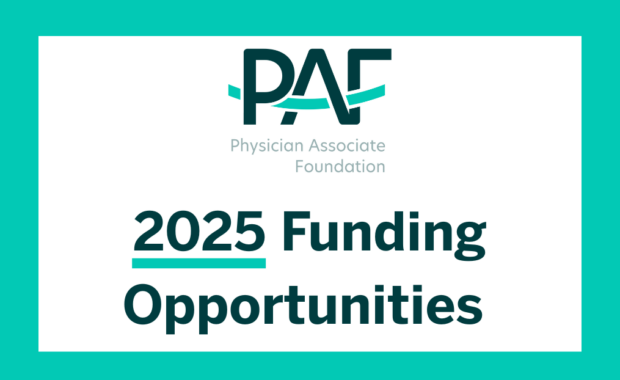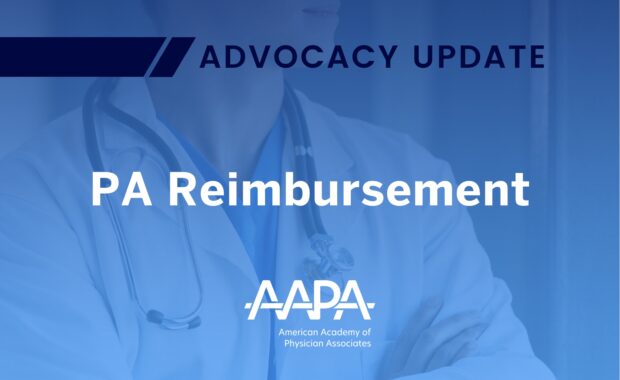What PAs Want in the Workplace: Providing Meaningful Input to Employers

By Bianca Belcher, PA-C, director at the American Academy of PAs (AAPA) Center for Healthcare Leadership & Management (CHLM)
PAs (physician assistants) are medical providers who offer a full-spectrum of patient care. They practice in every state and in every medical setting and specialty. Versatile and collaborative, PAs seamlessly work in teams with physicians and other providers, enhancing healthcare and the patient experience.
AAPA’s Center for Healthcare Leadership & Management (CHLM) works directly with hospitals and health systems to enhance team-based patient care and optimize PA practice. CHLM partnered with HealthStream, a leading provider of workforce, patient experience, and provider solutions for the healthcare industry, to gain an understanding of what PAs value in their place of employment.
Based on the findings, CHLM identified five key drivers as criteria for its Employer of Excellence Awards. To help employers attract and retain PAs and improve their bottom line, this is the fourth in a series of articles exploring employer practices that contribute to an ideal PA workplace. This article examines how one organization seeks PA input to facilitate positive organizational change.
NOMINATE YOUR EMPLOYER APPLY NOW
Implement clinical leadership structure
“Implementing a clinical leadership structure is an effective way to allow for PA engagement,” says John F. Kasel, DHA(c), MS, PA-C, DFAAPA, director of Advanced Practice Professionals (APPs) for the Central Texas division of Baylor, Scott & White (BSW) Health. “With our APP leaders in place throughout the organization, there is an opportunity to engage all PAs. The presence of APP Managers promotes the two-way communication that is vital to bringing about change.”
BSW’s structure includes APP Practice Administrators and APP Managers who report to service line leadership and are linked to the Director of APP position. Kasel says they formed the APP Council, which he chairs, to make BSW a destination of choice for APPs. Although other organizations have leadership structures, he says, they don’t always have APP Councils.
BSW’s Melinda Moore Gottschalk, PA-C, AAPA Board member, works most of the time in neurology, but also practices as a PA manager of Specialty Medicine. Gottshalk serves on the APP Council for Central BSW. The Council task forces look at onboarding and competency pathways to identify those elements that constitute the best practices. Kasel and Gottshalk believe their monthly meetings with APP Practice Administrators allow for important discussions of policies and ideas.
Gottschalk believes employers can benefit when they listen. “If policies are enacted without input from those actually implementing the policies, this lowers morale and causes discord. By asking for input you create buy-in from staff,” Gottschalk says.
Kasel concurs. “By seeking PA input, PAs are better able to truly partner with the organization and our physician colleagues.”
Engage PAs to be catalysts
With APP leaders, BSW can engage the PAs to be catalysts and promote needed practice transformation. Kassel’s role is to pull everyone together so they’re all rowing in the same direction as far as cultural issues are concerned.
“There are always things PAs can do to expand our value and practice. For us to be good leaders, we always have to be thinking ahead to see what we can do to change and advocate for,” Kasel says.
Gottschalk also encourages active communication in the form of surveys, town halls or face-to-face meetings, allowing everyone to help shape the organization. By doing so, she says, organizations will inspire engagement and excitement, which translates into retaining their PA workforce.
“Don’t waste a valuable human resource,” she adds. “PAs are natural leaders whether in their clinics or in organizational leadership roles.”
Work with leadership to implement transformation
Kasel thinks that BSW is moving the needle with regard to how PAs and NPs are utilized and changing the culture of how they are perceived and incentivized to do their jobs. They are taking seriously the concept of PAs operating like physicians. At the highest level, their physician leaders understand how PAs can provide value and he is working with top leadership to implement transformation.
BSW is starting a pilot in January around APP pay that mirrors physician compensation, weighted to achieve a 5 to 8 percent payout of base salary.
“We want to be more recognized as we are and mirror physician productivity. We’re looking at objective ways to make it work using EPIC,” Kasel says. “If people are highly productive, we should let them share in that increased value. We want to mirror our physician colleagues’ compensation.”
He is encouraged about meeting more cooperation than resistance and reports that BSW appears to be on the leading edge of making such changes.
CHLM works directly with hospitals and health systems to enhance team-based patient care and optimize PA practice. CHLM provides expertise, analytics, and industry best practices to help clients evaluate organizational alternatives designed to improve the effectiveness of their provider workforce.
Want to assess and improve your organization? Contact CHLM to help create a more positive environment for PAs and improve the bottom line. If your hospital already has a supportive PA work environment, apply for a 2018 CHLM Employer of Excellence Award and be showcased as a model for excellence.
Thank you for reading AAPA’s News Central
You have 2 articles left this month. Create a free account to read more stories, or become a member for more access to exclusive benefits! Already have an account? Log in.


